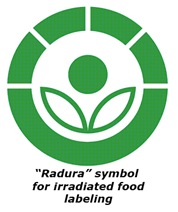Here We Go Again
 I have said before in this blog that 'we need an agency whose overarching mission is to ensure the safety of our food and drugs.'
I have said before in this blog that 'we need an agency whose overarching mission is to ensure the safety of our food and drugs.'
My point, one that I seem to be repeating a lot, is that our current FDA is more akin to a trade association. It's natural instincts are to downplay risks to prevent undue harm to large corporations, during which time great harm could be ensuing amongst the public at-large.
Here, for example is a quote from agency spokesperson, Judy Leon, concerning the recent discovery of melamine contamination in baby formula. You'll detect that the reflex action of the FDA is to conceal information, rather than to put out information and let the consumer make up his own mind about what is safe.
“There’s no cause for concern or no risk from these levels,” said Judy Leon, an agency spokeswoman. Ms. Leon said the contamination was most likely the result of food contact with something like a can liner, or from some other manufacturing problems, but not from deliberate adulteration. She declined to name the company that made the tainted infant formula.
The effort to withhold the name of the formula maker was soon abandoned, however. Perhaps the agency didn't want infants to be denied their right to gorge themselves at Thanksgiving dinner like everyone else, and so waited a couple of days to release this new and decisive statement:
|
The small problem alluded to is that the danger of melamine is potentiated by the presence of another substance, cyanuric acid. While none of the samples of US formulas tested positive for both chemicals,  they were each found separately in single samples. Lesson learned: don't mix and match formulas! I recommend that every parent test each container of formula they purchase before they feed their infant. Sound troublesome? Let's just say you're going to need one fancy chemistry set. Oh, and don't forget this:
they were each found separately in single samples. Lesson learned: don't mix and match formulas! I recommend that every parent test each container of formula they purchase before they feed their infant. Sound troublesome? Let's just say you're going to need one fancy chemistry set. Oh, and don't forget this:
The agency still will not set a safety level for melamine if cyanuric acid is also present, said Dr. Stephen Sundlof, the FDA's director of food safety.
So for now, parents, just wing it. After all, if your baby drinks 25 fluid ounces of formula a day, in the first 12 months, that only amounts to a total of 9,125 fluid ounces. At the recommended mixing level of 4.35 grams of Good Start powder per fluid ounce that is a mere 39,693.75 grams for the year. For those of you who still despise the metric system, that's a paltry 87.5 pounds of powder. My baby drank 34 fluid ounces a day, so this calculation may be a little conservative.
Those who argue that the potential exposure to melamine set by the new limits is small can feel good about it. As for me, I wonder how extensive a testing program will have to be deployed to determine the breadth of contamination. And I wonder what 'safe' means for infants with special risk factors, kidney problems for instance. Right now there are no answers and the only advice the FDA can come up with is 'don't do anything differently, for the moment.'
Here, perhaps, is an example of the kind of straight talk we need from the FDA:
 Foremost, we need choices, and the agency should be capable of offering the public an array of them, so the individual can decide for herself what comfort level to target. This is the problem that arises time and again, choice is withheld from the consumer, whether it be by obstructing Country of Origin labeling, or preventing complete disclosure of food irradiation with an icon-based sticker program. The Agency is making safety decisions on your behalf, but it is altogether unclear for whom their greatest allegiance is reserved.
Foremost, we need choices, and the agency should be capable of offering the public an array of them, so the individual can decide for herself what comfort level to target. This is the problem that arises time and again, choice is withheld from the consumer, whether it be by obstructing Country of Origin labeling, or preventing complete disclosure of food irradiation with an icon-based sticker program. The Agency is making safety decisions on your behalf, but it is altogether unclear for whom their greatest allegiance is reserved.

